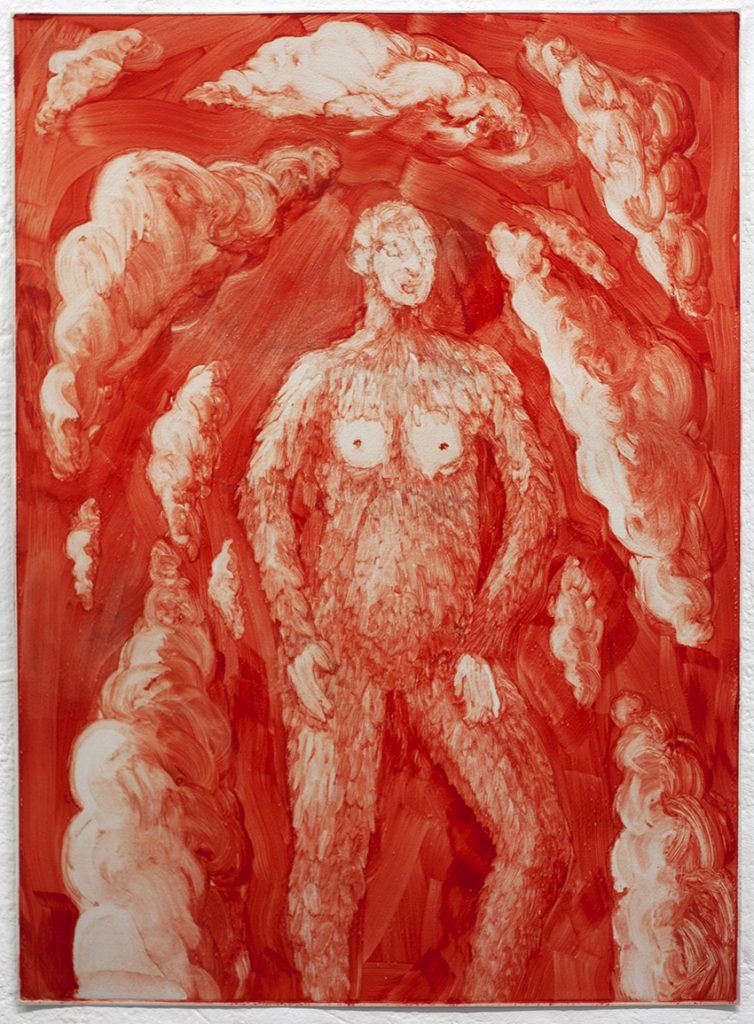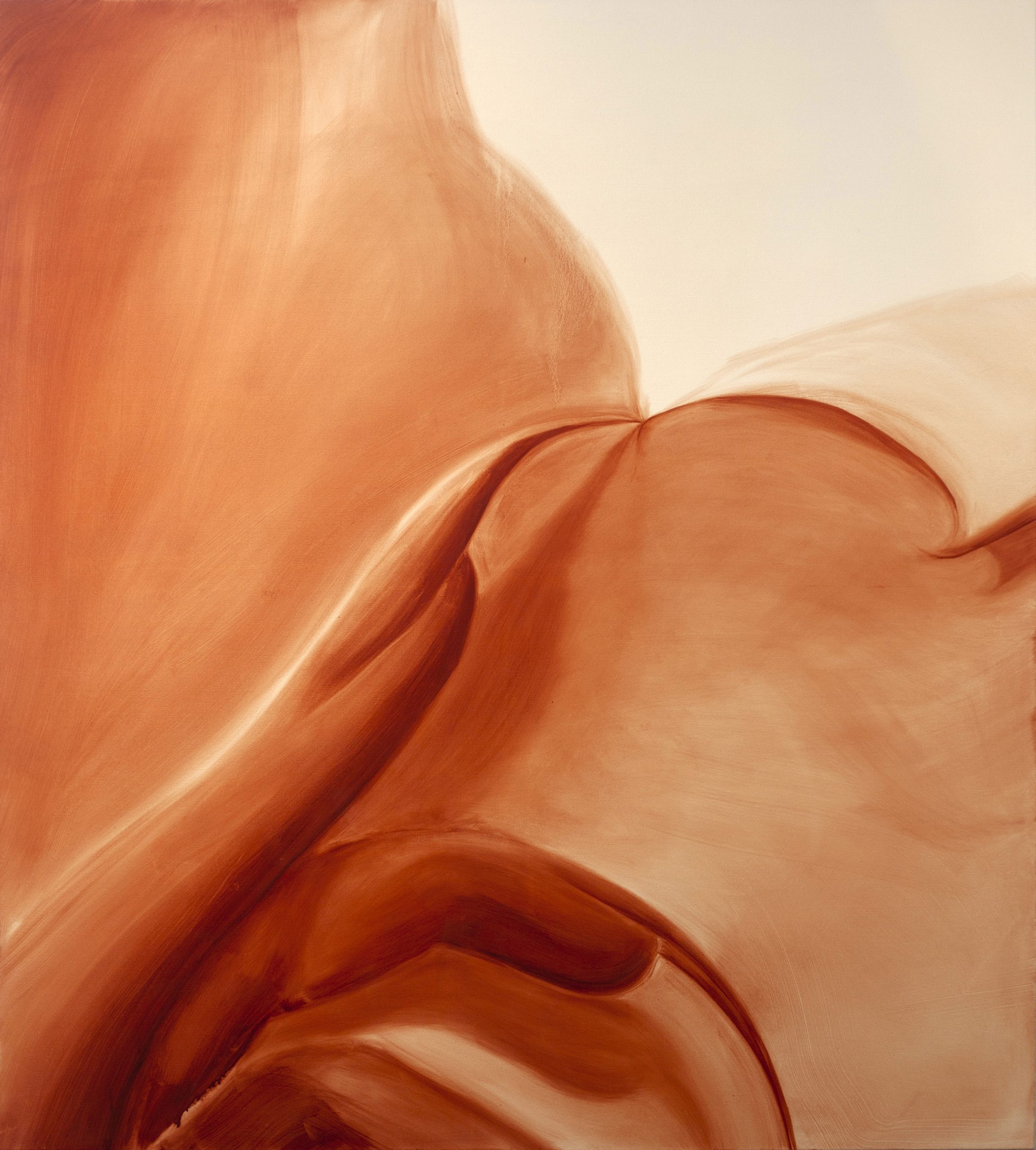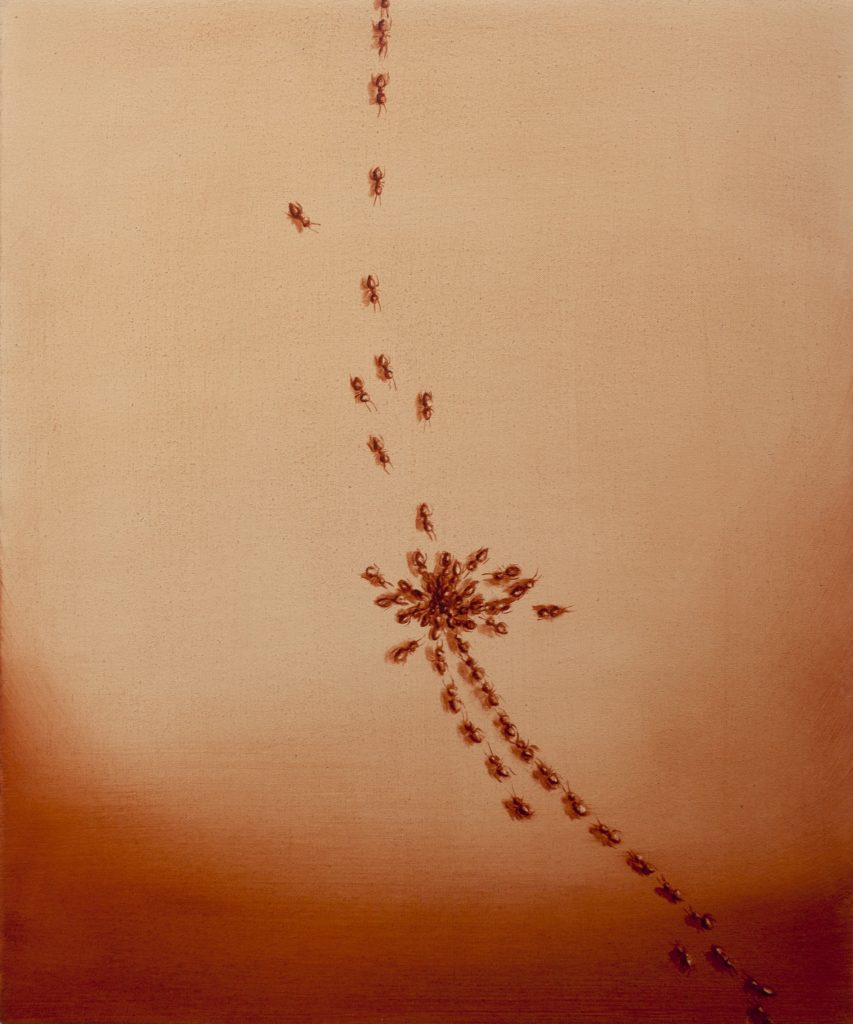
Paula Turmina is a multidisciplinary artist whose work explores mythology and magic realism in order to imagine new perspectives of the future. Her paintings, analog films, and sculptures often create expansive imaginary visuals that concern her personal experience, ecological issues and Latin American colonial history. She is interested in anthropological and post-colonial theories as a methodology of speculative practices taking into account beyond human lives.
+ + +
Q&A with Paula Turmina – May 2020
How did you get started?
My upbringing was in the countryside in south Brazil, which was definitely not surrounded by art and culture. I was drawing since a young kid… on my sister’s dolls, on my hand, on the walls around our house… But it wasn’t until I came to the UK in 2013 that I realised my passion for art and creative processes could actually make me an artist. In between all this, I have studied and worked as a graphic designer, once in the UK, I rejected completely the digital art form to get back to drawing, painting and anything my hands can make into art.
What type of work do you make?
I work primarily with painting, printmaking and analog films. I’m driven by the intersection of concepts and disciplines such as anthropology, philosophy and the visual arts, considering its different ways of describing and rendering the world. I create expansive imaginary visuals drawn from my personal experience, ecological issues, and Latin America’s colonial past. I see the act of creating an image as a way to develop critical thinking and creating a ground that contains the unlimited potential for staging meanings, but that can never truly be resolved. Contradiction plays an important role in this sense.

Describe a typical day in the studio?
At the moment my practice is shifting and I am painting more freely and less consistently. I’ve lost the schedule I had before in the studio but am paying attention to how my body and energy reacts to time. However, under a normal circumstance, I would start with small sketches and painting studies, followed by some reading and research and only really painting once thoughts and anxiety are calmer. Late afternoon and into the evening seems to be the time I can really focus on the work and forget myself into it.
What are you currently working on?
I was working towards my degree show at the Slade, but have decided to interrupt my studies until next year rather than having an online degree show. This has slowed my practice and is giving me time to really consider why I’m making what I’m making. Since early this year, I have started writing and thinking of a fictional story that reflects on life on the planet under 2°C above pre-industrial levels, which according to the IPCC report, is the furthest we can go on living a regular life as a homo sapiens. Thinking of the apocalypse, ecological disaster and survival measures took a new shape during COVID. It has led me to paint a lot of eyes turned to the sun, and I am calling them sun worshippers. I am interested in creating my own myths and references within the painting and writing. Alongside this, I am also working on my thesis questioning what role images play in the construction of the truth and reality (against the fictional) by analysing images and prints from the colonial period in Brazil. Hopefully, if we’re back on track next year, you’ll be able to see some of these works during the Slade postgraduate degree show.
What are some of the key influences on your work?
An artist I have always admired and keeps coming back is the Brazilian artist Adriana Varejao, but there are so many artists I admire that I find hard to name all of them. I am, in fact, mainly driven by philosophical concepts of humanity and deeply inspired by indigenous knowledge, it is what grounds me to earth and community thinking. Some of these thinkers are Davi Kopenawa, Eduardo Viveiros de Castros and Donna Haraway. Key-words: anthropomorphism, decoloniality, worlding, absurdism, red.
What kind of cultural engagement are you turning to while we are temporarily unable to get to museums, galleries, theatres and events?
I am enjoying the weekly schedule of the galleries Konig Gallery and Carlos Ishikawa. There are interviews, lectures and stuff to read and watch that is giving me a lot of food for thought and also helping me to process the situation with the insight of other artists. For the painters and poets, our Slade tutor Rose Davey is releasing a weekly lecture on master painters with a contemporary and critical look into it. You can access it here: https://vimeo.com/

I also just finished reading two wonderful books: ‘Hothouse’ by Brian Aldiss and the classic by Albert Camus ‘The Outsider’. They both have a great impact on my practice because of the sci-fi and poetic look at the solar systems and human affairs, and also the questions of beliefs and truth. Lastly, I am always observing my boyfriend, Mario Radev, developing his audio-visual performances at home and playing around with animation which inspires me a lot!
What is the most surprising thing to you about the Chelsea Arts Club?
I was firstly surprised by the fact that we cannot use our phone inside the club, but mostly how alive and inspiring it is to be inside. It was wonderful to be able to chat with people from different backgrounds, practices, ages and have such fruitful conversations! It is fun!
The thought that gets me out of bed each day is…
there’s more to see. there’s more to listen. there’s more to learn. And I’m excited to process it through making…..
Images in order:
‘There was something weird about that place, I think it was the clouds’, Monoprint on paper, 50x70cm
‘Crawling hand on 2°C higher’, Oil on canvas, 160x180cm
